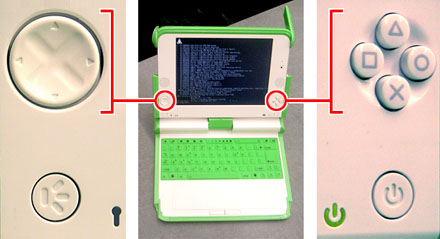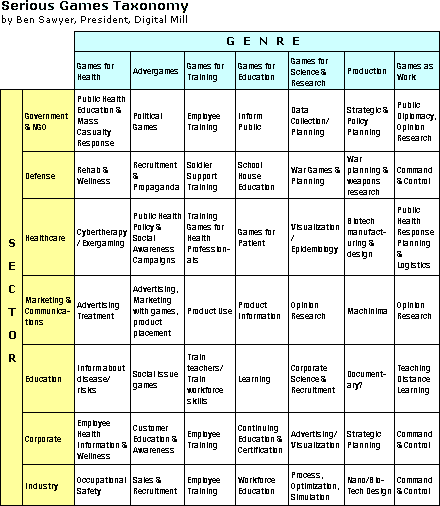Wednesday, May 14th, 2008
On May 9th, the first ever Joan Ganz Cooney Center Symposium was kicked off at the McGraw-Hill offices located in New York City. The Joan Ganz Cooney Center is the newest addition to the Sesame Workshop enterprise. Its mission is to offer guidance, research and insight into how children can learn through emerging media. The symposium itself was an amazing event. A stellar list of speakers and influential attendees from diverse areas of education, broadcast, gaming and the toy world came together to discuss the future of learning and technology for children in the 21st century. This jam-packed event included presentations from over 34 different industry insiders. Over 150 invited guests filled the room. Included on the guest list was Congressman George Miller (D-CA) who is the chairman of the House Education and Labor Committee.
All of the presentations offered many important perspectives and voices that are shaping the learning and technology conversation today. A number of speakers served up new research and valuable insights to chew on long after the event concluded. While there was significant take-away from all of the speakers, I would like to call out two specific presentations. These include the presentations of Connie Yowell of the MacArthur Foundation and Jennifer Kotler of Sesame Workshop.
First and foremost, Connie Yowell‘s presentation on new learning paradigms was simply amazing, passionately delivered, and has given many folks the most food for thought about the future of new media and learning. Connie expressed the importance of seeking out the right questions to ask at the beginning of our journey, stating that in order for us to realize the opportunity in front of us, we must be ready for a significant paradigm shift in the existing learning conversation. I heard many attendees echo the importance of Connie’s words at the conclusion of the event. In the matrix below, I have included an audio recording of Connie’s presentation. A transcription of her comments can also be found in my next blog article.
During this part of the symposium, both Ellen Wartella (of UC Riverside) and Connie Yowell’s words were offered in succession and both speakers expressed a great need for more research and a significant rethinking of our current approach to education and learning. Their comments were vital ones to be heard by policy makers, and while Representative George Miller attended the event for most of the day, sadly he left just before Ellen and Connie took the stage.
The next presentation I’d like to call attention to was that delivered by Jennifer Kotler. Jennifer presented two reports, but one in particular has an important story to be told. This report gathered information from interviews conducted with children ages 6 to 9. It asked them about their favorite games and websites. Included within this report was a very clever validity check that, when its findings were presented, calls into question any other self-reported findings from other organizations asking similar questions about kids and online preferences.
In the study, kids were asked about their technology preferences. Included within the interview question sets were six non-existent website and game names. That’s right, online products that were completely fictitious and do not exist. What this report revealed was that 56% of those surveyed claimed to have played these non-existent games and websites. How could this be?
What the research suggests is that kids may be more likely to exaggerate their actual use of technology because of the apparent “cool factor” and/or the aspirational aspect of these technologies. How does this cool/aspirational factor play out within the data? Here are just a couple of examples: When kids were asked if they have ever visited a MySpace page, the “clean” data suggests that only 19% of those surveyed have visited the popular online destination whereas the non-valid data states the number is 54%. When asked about posting video on YouTube, the numbers are 7% (valid data) vs 42% (non-valid data).
These findings suggest that similar studies conducted by other organizations would benefit greatly by the inclusion of a validity test in their research. If not, the numbers reported could be significantly skewed from what they should be. Now that we’re all armed with this information, go back and look at all the claims regarding other popular children’s destinations, like Club Penguin, Webkinz, and the like. Hmmmmm.
I would also like to call out presentations made by Bernie Trilling of Oracle Education Foundation about 21st Century Learning Skills, Allison Druin for her work with the International Children’s Digital Library project, Krista Marks of Kerpoof, James Paul Gee and his report on Getting Over the Slump, and Jim Styer of Common Sense Media for his report on how parents and educators view the educational potential of new media.
The matrix below offers audio recordings, papers, and related websites collected from the event. Friends and colleagues who know me well will tell you that I’m rarely without a camera or recording device at such events. I believe it’s important to capture and share such information with everyone so that industries can move forward together. The list below includes audio recordings from most of the speakers. However, my apologies go out to the last 8 or so speakers, mostly from Warren Buckleitner’s Dust or Magic panel, for by the end of the day my recording device lost power.
All of the audio clips can be downloaded as a single zipped file here.
| Audio | Site | Speaker or Description | |
|---|---|---|---|
| Yes | – | – | Opening video (audio recording only) |
| Yes | – | – | William Oldsey – EVP, McGraw-Hill Education |
| Yes | – | – | Gary E. Knell – President and CEO, Sesame Workshop |
| Yes | – | – | Joan Ganz Cooney – Co-Founder, Sesame Workshop |
| Yes | Yes | – | Michael Levine – Executive Director, Joan Ganz Cooney Center |
| Yes | Yes | – | Jim Steyer – Founder & CEO, Common Sense Media |
| Yes | Yes | – | James Paul Gee – Mary Lou Fulton Presidential Professor of Literacy Studies, Arizona State University |
| Yes | – | – | Questions and Answers |
| Yes | – | – | Claudia Wallis – TIME Magazine |
| Yes | – | – | Buwon Tran – Director of Consumer Research, Casual Entertainment, Electronic Arts |
| Yes | – | – | Jennifer Kotler – Assistant VP of Domestic Research, Education, Research and Outreach Department, Sesame Workshop |
| Yes | – | – | Susan Neuman – Professor of Educational Studies, University of Michigan |
| Yes | – | – | Francie Alexander – SVP of Scholastic Education and Chief Academic Officer, Scholastic |
| Yes | – | – | Questions and Answers |
| Yes | – | – | Lisa Guernsey – journalist, author of Into the Minds of Babes |
| Yes | – | – | Marilyn Jager Adams – Research Professor of Cognitive and Linguistic Sciences, Brown University |
| Yes | Yes | – | Bernie Trilling – Global Director, Oracle Education Foundation |
| Yes | – | – | Nichole Pinkard – Senior Research Associate & Assistant Professor, University of Chicago |
| Yes | – | – | Margaret Honey – SVP, Strategic Initiatives & Research, Wireless Generation |
| Yes | – | – | Lesli Rotenberg – SVP, PBS KIDS Next Generation Media Initiative |
| Yes | – | – | Jayne James – Executive Director, Ready to Learn, Corporation for Public Broadcasting |
| Yes | – | – | Questions and Answers |
| Yes | – | – | U.S. Rep. George Miller (D-CA) – Chairman of the House Education and Labor Committee |
| Yes | – | – | Gabriel Zalzman – SVP and General Manager, Fisher-Price |
| Yes | – | – | Bing Gordon – Chief Creative Officer, Electronic Arts |
| Yes | – | – | Linda Roberts – Former Director, Office of Educational Technology, US Department of Education |
| Yes | – | – | Rob Lippincott – SVP, Education, PBS |
| Yes | – | – | Ellen Wartella – Executive Vice Chancellor & Provost, UC Riverside |
| Yes | – | – | Connie Yowell – Director of Education, MacArthur Foundation |
| – | – | – | Delia Pompa – VP for Education, National Council of La Raza |
| – | Yes | – | Warren Buckleitner – Editor, Children’s Technology Review |
| – | – | Yes | Allison Druin – Director, Human-Computer Interaction Lab, University of Maryland |
| – | – | – | Michael T. Jones – Chief Technology Advocate, Google, Inc. |
| – | – | Yes | Krista Marks – CEO & Co-Founder, Kerpoof |
| – | – | Yes | David Rose – Chief Scientist, CAST |
| – | – | – | Kathy Shirley – Technology and Media Services Director, Escondido Union School District |
| – | – | – | Michael Levine – Executive Director, Joan Ganz Cooney Center |



